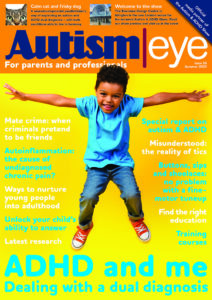Autistic people may find it difficult to identify facial expressions – particularly anger – in real-world situations.
That’s according to new research by the University of Birmingham.

Speed and intensity affects recognition
The study found that the ability of autistic people to accurately identify facial expressions was affected by the speed at which the expression was produced and its intensity.
In particular, the study found they tend to be less able to identify anger from facial expressions produced at a normal, ‘real world’ speed.
The researchers also found that for people with a related disorder, alexithymia, all expressions appeared more intensely emotional. Alexithymia is when a person has difficulty identifying and expressing emotions.
Scientists have debated for more than three decades the question of how people with autism recognise and relate to emotional expression. It is only in the past 10 years that researchers have explored the relationship between autism and alexithymia.
This new study uses innovative techniques to explore the different impacts of autism and alexithymia on a person’s ability to accurately gauge the emotions suggested by different facial expressions.
‘Speaking a different language for emotion’
Lead author of the study is Connor Keating, a PhD researcher in the University of Birmingham’s School of Psychology and Centre for Human Brain Health.
He said: “We identified that autistic people had a specific difficulty recognising anger, which we are starting to think may relate to differences in the way autistic and non-autistic people produce these expressions.”
He added: “If this is true, it may not be accurate to talk about autistic people as having an ‘impairment’ or ‘deficit’ in recognising emotion – it’s more that autistic and non-autistic faces may be speaking a different language when it comes to conveying emotion.”
The study involved 31 autistic and 29 non-autistic participants. Researchers asked them to identify emotions from a series of moving images. The images consisted of dots representing the key dynamic points of a facial expression, similar to the dots used to translate human movement into CGI animation.
Researchers displayed the images at a range of emotional intensities by varying the amount of movement in each expression, and at a variety of speeds.
The team found that autistic and non-autistic participants had similar recognition capabilities at different speeds and intensities across all the emotions shown, except for one particular aspect – the autistic group were less able to identify angry expressions produced at normal speed and intensity. These represented the sorts of angry expressions that might be encountered in everyday life.
‘Recognising anger a difficulty specific to autism’
“When we looked at how well participants could recognise angry expressions, we found that it was definitely autistic traits that contribute, but not alexithymic traits,” explained Connor.
“That suggests recognising anger is a difficulty that’s specific to autism.”
The scientists hope that by better understanding how people with autism perceive and understand the world they can start to develop training and other interventions for autistic and non-autistic people to overcome some of the barriers to interacting with others.
The new study is published in the Journal of Autism and Developmental Disorders.
Related:
Published: 30 June 2021















